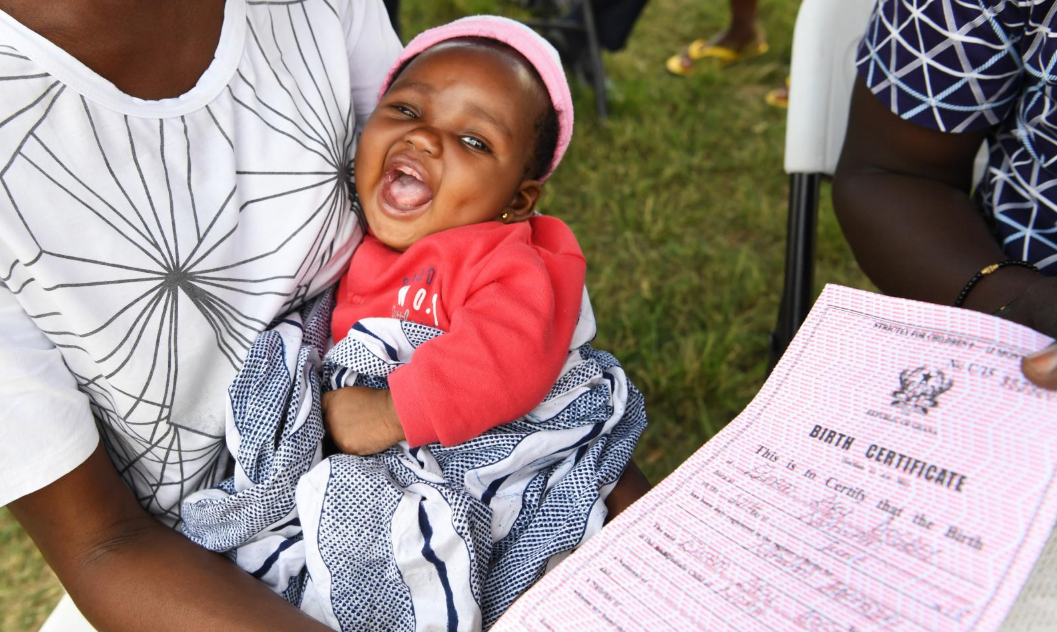
Society first acknowledges a child’s existence and identity through birth registration. The right to be recognized as a person before the law is a critical step in ensuring lifelong protection and is a prerequisite for exercising all other rights.
A birth certificate is proof of legal identity, and is the basis upon which children can establish a nationality, avoid the risk of statelessness and seek protection from violence and exploitation. For example, proof of age is needed to help prevent child labour, child marriage and underage recruitment into the armed forces. A birth certificate may also be required to access social service systems, including health, education and justice.
This publication presents the latest available country data and global and regional estimates of the number of unregistered children. It also assesses progress over time and presents evidence for the amount of effort that will be needed – at both global and regional levels – to achieve universal birth registration by 2030.
Data coverage and availability on birth registration has improved over time
Functioning civil registration systems are the main vehicles through which a legal identity for all can be achieved. Civil registration systems that are operating effectively compile vital statistics that are used to compare the estimated total number of births in a country with the absolute number of registered births during a given period. However, the systematic recording of births in many countries remains a serious challenge, highlighting the urgent need to improve and strengthen civil registration and vital statistics. While data coverage has improved over time, this has largely been the result of investment in collecting data on birth registration in low- and middle-income countries through household surveys. In fact, in the absence of reliable administrative records, household surveys have become a key source of data to monitor levels and trends in birth registration.
Over the last two and a half decades, the number of countries with household survey data on birth registration has risen dramatically – to over 120
Cumulative number of countries with household survey data on birth registration

Where we stand today
One in four children under age 5 (166 million), on average, are not registered in the world today. And even when they are, they may not have proof of registration. The reasons are all too common: a lack of resources and investment in accurate and comprehensive civil registration systems, coupled with barriers in accessing birth registration services, along with policy, regulatory and institutional obstacles.
A critical link: Making the connection between birth registration and certification
A birth certificate, obtained once a birth has been registered, provides children with proof of legal identity. It is considered a ‘breeder document’ necessary for applying for other documents, including a passport. Providing children with a birth certificate immediately after birth, rather than later in life, is essential to ensuring that they can claim their rights and access services. Nevertheless, the data show a large gap between the number of children whose births are reported as registered and those who actually have a birth certificate. Of the roughly 508 million children under age 5 who are registered worldwide, about 70 million lack proof of registration in the form of a birth certificate.
Time is of the essence: Registration should take place as soon as possible
Most countries have legislation in place that specifies the time period allowed between the occurrence of a vital event (such as a birth) and the obligatory registration of that event. Registration should take place as soon as possible after a birth has occurred. Registering a birth within a reasonable time (and no later than 30 days after the event) minimizes the risk of misreporting details or failing to report the birth altogether.
Assessing progress and looking to 2030
The last two decades have seen a rise in birth registration levels globally, with about 3 in 4 children under age 5 registered today compared to 6 in 10 around 2000. However, progress has been uneven. Additional investments will be required to ensure universal birth registration by 2030, particularly among the most vulnerable children. Simply raising birth registration levels is not enough. Improvements are also needed to enhance the quality of civil registration systems to achieve universal coverage along with continuity, confidentiality and regular dissemination of data. Civil registration records must be continuously maintained so they can be easily retrieved by individuals. At the same time, the registration process itself must be easily available and accessible to all.
Learn more about UNICEF’s data work on birth registration
